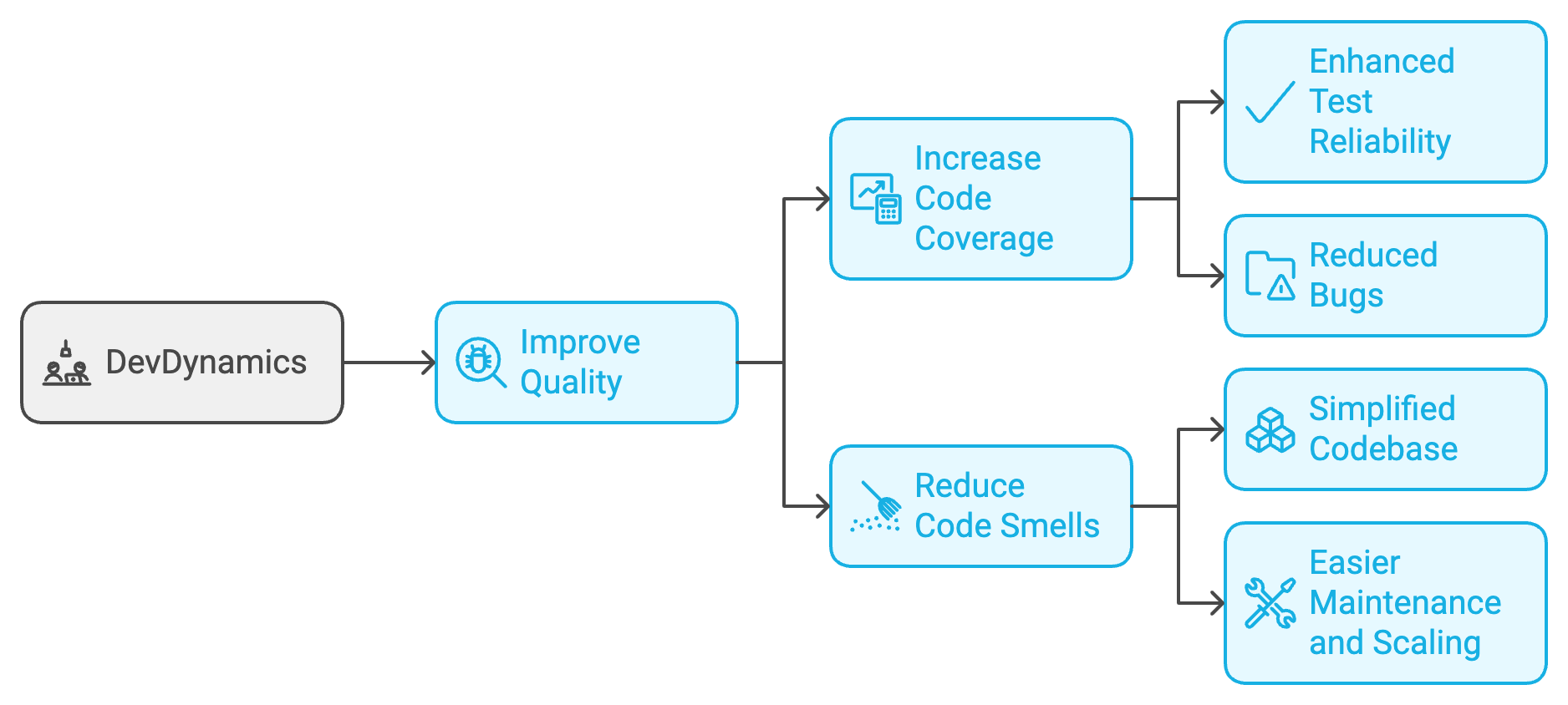[Case Study] How Socly's Team Used DORA Metrics to Achieve Elite Engineering Performance
![[Case Study] How Socly's Team Used DORA Metrics to Achieve Elite Engineering Performance](/blog/content/images/2024/11/Socly-casestudy--2-.jpg)
About Socly.io
Socly helps startups achieve SOC2 compliance, ensuring their clients' data security and privacy.
Pushing for Elite Performance: Why DORA Metrics Matter
As Socly.io grew, maintaining operational excellence and keeping pace with industry leaders became a top priority. The engineering team decided to focus on achieving elite DORA status, a critical benchmark for any high-performing software team. DORA metrics are widely recognized as the gold standard for measuring software delivery and operational performance.
“We were already delivering high-quality services, but we knew optimizing our DORA metrics would give us an edge in scalability and reliability. For a company like ours, achieving elite DORA metrics means we can guarantee operational excellence and security.” explains Abhishek J., CTO.
For Socly.io, hitting elite status wasn’t just about improving numbers—it was about setting themselves apart in a highly competitive market.
Benchmarking for Elite: MTTR and Change Failure Rate as Key Metrics
By integrating their tech stack—Bitbucket, Jira, and SonarQube—with DevDynamics, Socly.io started tracking DORA metrics. Two metrics became critical in their journey to elite status:
- Mean Time to Recovery (MTTR): MTTR measures how quickly a team can resolve incidents after detection. Socly.io's MTTR was high, meaning incidents took longer to resolve, impacting service uptime and customer satisfaction. By reducing MTTR, the team aimed to minimize downtime and improve response time.
- Change Failure Rate (CFR): This metric tracks the percentage of deployments that result in failures requiring a rollback or fix. Socly.io's medium CFR indicated stable but not elite-level deployments. The goal was to reduce the failure rate, leading to smoother releases.
“MTTR and CFR gave us a clear focus—moving from high and medium performance to elite,” Abhishek says.
Finding the Weak Spots: Code Coverage and Code Smells Exposed
To achieve these goals, the team used DevDynamics’ code quality dashboard to identify the root causes affecting their DORA metrics.
- Code Coverage: At 65%, their test coverage was medium, leaving portions of the code untested. DevDynamics helped them identify specific repositories with low coverage, allowing them to prioritise test creation in these critical areas. By targeting these weak spots, Socly.io improved test reliability and reduced bugs.
- Code Smells: DevDynamics flagged 40% of the codebase with code smells—suboptimal coding practices like overly complex methods or duplicated code. These inefficiencies weren't causing immediate issues but were contributing to technical debt, making the codebase harder to maintain. By identifying the most severe code smells, the team refactored the code during regular reviews, simplifying complex structures and eliminating redundancies.
DevDynamics didn’t just flag the code smells—we provided actionable insights:
- Prioritizing Refactors: DevDynamics helped them identify the sections of the codebase with the most impactful code smells, allowing the team to prioritize refactoring efforts where they would make the biggest difference.
- Targeted Cleanup: Socly.io received weekly custom AI-generated reports from DevDynamics, specifically configured to track quality issues across specific repositories.
This report, delivered weekly, provided engineering leaders with detailed insights into key metrics and problem areas.The team used these insights during sprints to incorporate targeted refactoring into their workflow, ensuring improved overall code quality.
Achieving Elite DORA Status: Results from Key Improvements

Socly.io focused on two main areas:
- Code Coverage: DevDynamics helped identify critical repos with low coverage. The team increased coverage from 65% to 82% in three months, improving test reliability and reducing bugs.
- Code Smells: The team reduced code smells by 40%, simplifying the codebase and making it easier to maintain and scale.
By targeting these metrics, Socly.io achieved elite DORA status:
- MTTR: Improved from high to elite, resulting in faster recovery times.
- CFR: Reduced from medium to elite, leading to smoother deployments.
- Code Quality: The improvements resulted in a 37% increase in quality, fewer bugs, and faster development cycles.
Conclusion: Achieving Elite Performance with DevDynamics
Socly.io used DevDynamics to focus on elite DORA metrics, driving improvements in MTTR and CFR by addressing underlying issues with code coverage and code smells. As a result, they achieved elite performance while continuing to scale efficiently.
“With DevDynamics, we’ve built a system that supports elite performance and scalability.” says Abhishek J.
Key Takeaways:
- Elite DORA Performance: Achieved by focusing on MTTR and CFR.
- Data-Driven Approach: Using code coverage and code smells to optimize quality.
- Results: A 37% improvement in quality, faster recovery, and fewer deployment issues.

